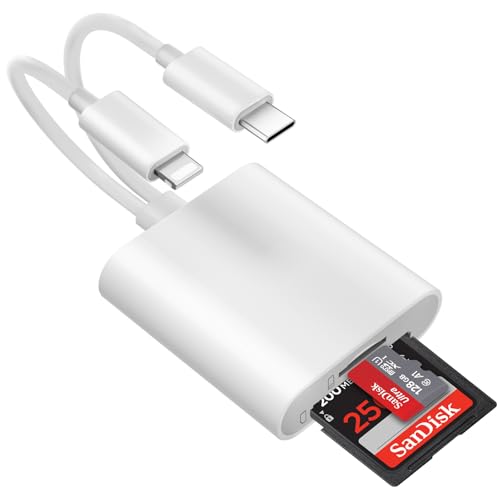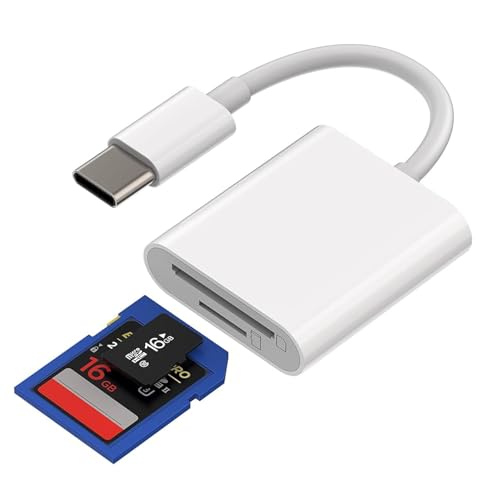Understanding USB-C Memory Card Readers: What They Are and Why You Need One
Definition and Functionality
A USB-C memory card reader is a compact device designed to read memory cards from cameras, smartphones, or other electronic devices, allowing you to transfer photos, videos, and data to your computer or mobile device with ease. Unlike traditional USB connections, USB-C offers faster data transfer speeds and a reversible connector, meaning it can be plugged in either way for convenience. This modern interface is quickly becoming standard on many newer laptops and smartphones, making a USB-C memory card reader an essential accessory for anyone who frequently moves data between devices.
Benefits of USB-C
Utilising a USB-C memory card reader offers multiple advantages. For starters, USB-C supports higher transfer rates, which can significantly reduce the time it takes to upload or back up files, especially if you’re dealing with large video files. Moreover, these readers are typically compact and lightweight, making them perfect for travel or on-the-go use. If you often take photos at events or when travelling, a USB-C memory card reader will save you time and hassle in transferring your memories.
Key Features to Consider When Buying a USB-C Memory Card Reader
Compatibility and Format Support
When selecting a USB-C memory card reader, ensure that it is compatible with the types of memory cards you use most frequently, such as SD, microSD, or CompactFlash. Some readers come equipped with multiple slots, allowing you to easily switch between different card formats without needing multiple devices.
Data Transfer Speeds
Another critical feature is the data transfer speed. Look for readers that support USB 3.1 or higher, as these can offer faster data transfer rates compared to older USB standards. This ensures you spend less time waiting for files to copy, especially when managing large image libraries.
Build Quality and Design
The construction of the reader matters too. Opt for a model that is made from durable materials, as this helps to resist wear and tear from everyday use. Additionally, consider a design that suits your lifestyle; for example, if you frequently travel, a slim and lightweight model would be ideal.
How to Choose the Right USB-C Memory Card Reader for Your Needs
Assessing Your Usage
Begin by evaluating how you plan to use the memory card reader. If you’re a professional photographer or videographer, you may require a high-end model with fast transfer rates and support for various card formats. Conversely, if you are a casual user who mainly transfers images from vacation photos, a basic model with essential features might suffice.
Portability Considerations
Consider how portable you need your reader to be. If you often find yourself on the move, look for a pocket-sized option that includes a protective cover or case. This will help prevent any accidental damage while you carry it along with your other equipment.
Future-Proofing Your Selection
It’s also wise to think about future needs. Opting for a memory card reader that accommodates newer standards or formats can save you from needing to replace the device in a few years. Staying ahead with a versatile reader means you won’t have to compromise on performance or compatibility.
Top Recommendations for USB-C Memory Card Readers in 2023
Round-Up of Reliable Options
In 2023, there are several USB-C memory card readers that stand out for their performance and reliability. For those needing high-speed transfers, consider models from reputable tech brands known for their robust design and excellent customer reviews. For users looking for versatility, options that come with dual slots for SD and microSD cards can cater to various needs. Additionally, some models offer extended functionality, including additional USB ports for connecting more devices.
Affordability vs. Features
Finding the balance between cost and features is essential. Well-priced models do exist that do not skimp on quality or speed. While it might be tempting to go for the cheapest option, investing a little more can yield a product that lasts longer and performs better.
Tips for Using Your USB-C Memory Card Reader Effectively
Maximising Your Reader’s Potential
To get the most out of your USB-C memory card reader, ensure that you always eject your memory card properly after transfer to prevent data corruption. Additionally, keep your reader clean and store it in a protective case when not in use to prolong its life.
Organising Transfers
When transferring files, consider creating folders for your images or videos beforehand to keep things organised. This not only saves you time later on but also makes it easier to locate specific files when you need them.
Keeping Software Updated
Lastly, ensure your computer’s operating system is up to date, as this can control how well the USB-C reader functions. Checking for any required driver updates can also enhance your reader’s performance, helping you avoid potential issues during file transfers.


































